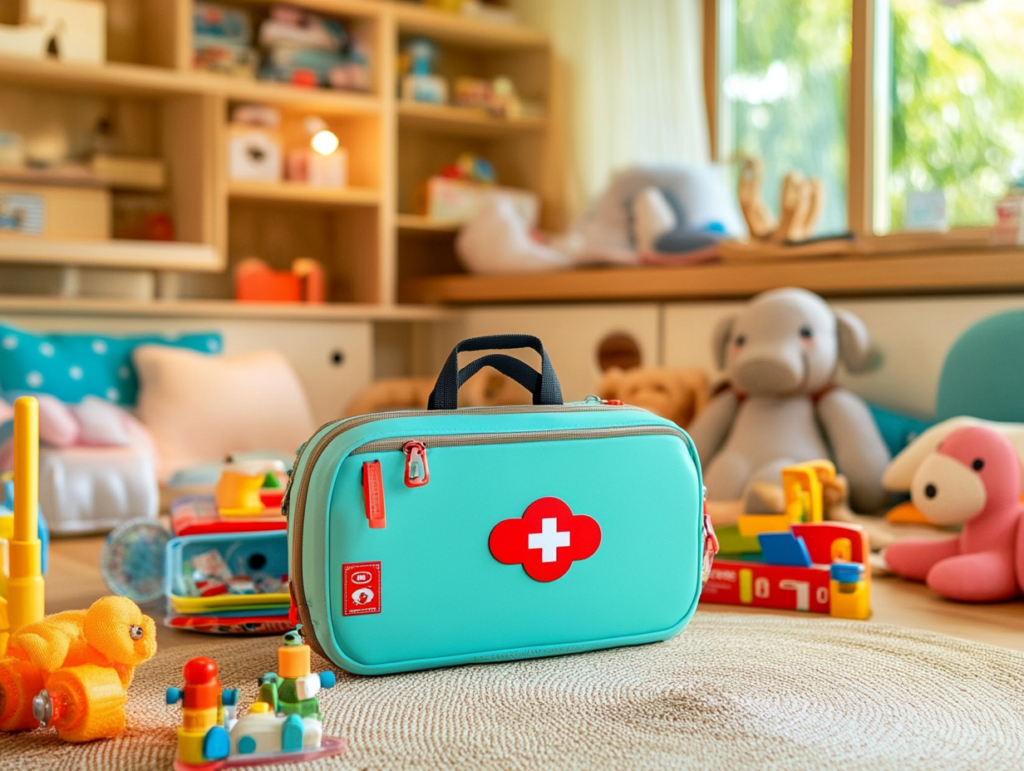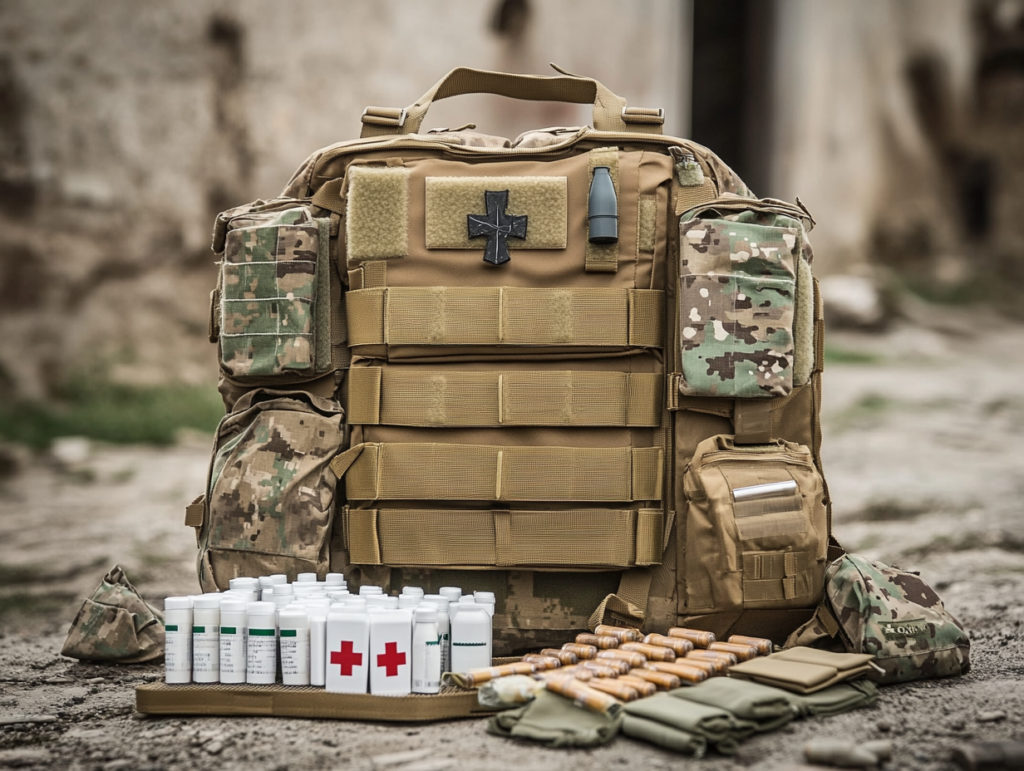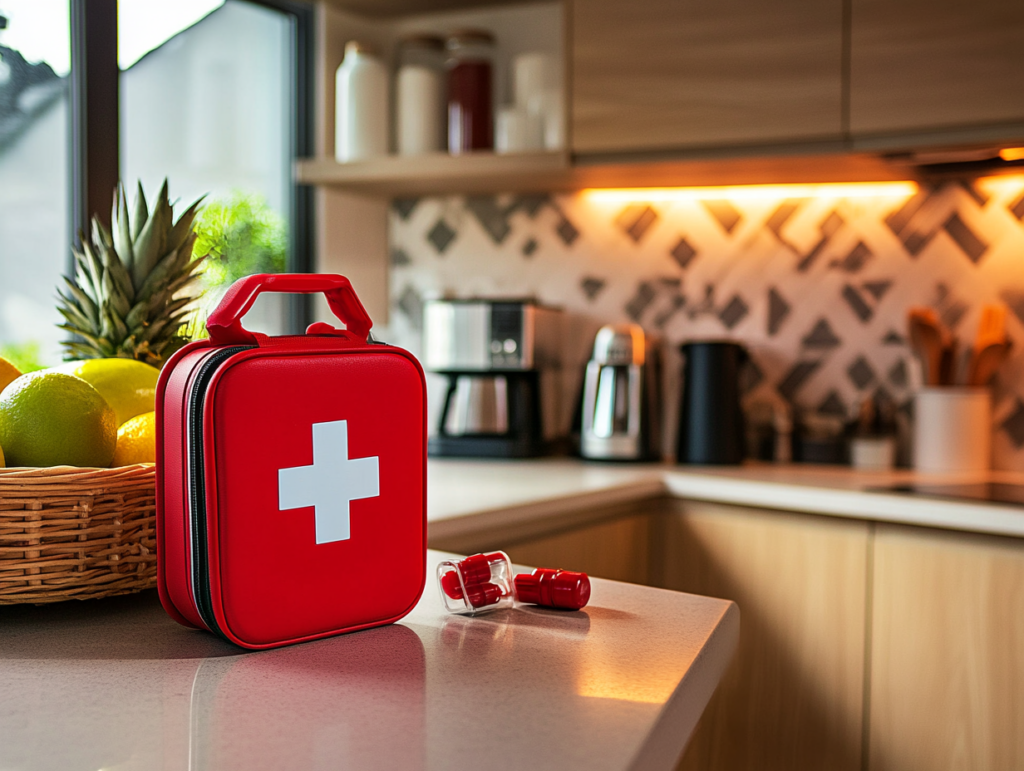- Introduction: The First Line of Defense for Protecting Lives
- First Aid Needs in Schools and Nurseries: A Comprehensive Analysis of High – Frequency Injury Types
- Configuration Scheme of Children's First Aid Kits: Hierarchical Customization Strategy
- Emergency Response Process: Closed – Loop Management from Pre – plan to Action
- Systematic Construction: A Global Mindset Beyond First – Aid Kits
- Conclusion: Building a Systematic Project of Life Safety
Introduction: The First Line of Defense for Protecting Lives
In the lively campuses and nurseries, children’s curiosity and desire for exploration are fully unleashed. However, their active and lively nature also makes accidents follow them like shadows.
According to the World Health Organization, about 25% of child injury incidents occur in educational institutions globally each year.
Among them, minor injuries such as Xiaoming falling and scraping his knee during the school sports meeting or Xiaohong getting cut by scissors in a handicraft class account for about 80% of the injury incidents.
And these seemingly insignificant minor injuries can greatly reduce the risk of deterioration if they receive proper first aid in a timely manner.
Equipping children’s first aid kits is not only to meet regulatory requirements. For example, the regulations of the Occupational Safety and Health Administration (OSHA) in the United States and China’s “Measures for the Safety Management of Primary and Secondary Schools and Kindergartens” have clear provisions.
It is also a powerful guarantee for the safety of every child’s life. In critical moments, a scientifically configured set of first – aid tools can reduce the impact of injuries by more than 60% during the golden first – aid time and become a crucial force in protecting lives.
First Aid Needs in Schools and Nurseries: A Comprehensive Analysis of High – Frequency Injury Types
Mechanical Injuries (Accounting for 45% – 60%)
On the school playground, children run and play heartily, but they are also prone to scrapes due to running and falling. In handicraft classes, if they are a little careless when using knives, cutting injuries may occur.
In addition, when playing on climbing facilities and accidentally falling, or colliding with each other during group activities, the risks of sprains and fractures should not be underestimated.
There is also nosebleeding, which may occur suddenly on campus, whether caused by dry weather or accidental impacts.
Biological Injuries (Accounting for 20% – 30%)
In terms of diet, food allergies occur from time to time. Common allergens such as nuts and seafood may cause children to have rapid allergic reactions after consumption.
During the spring and autumn pollen seasons, many children also suffer from hay fever. There are many insects on campus, and bee stings and mosquito bites are also relatively common.
Moreover, it is necessary to carefully distinguish between toxic reactions. Every flu season, schools become high – risk areas for infectious diseases, and it is crucial to do a good job in body temperature monitoring and isolation measures.
Environmental Injuries (Accounting for 15% – 25%)
In the school cafeteria, hot water is used frequently, and with a little negligence, children may be scalded. In science experiment classes, various chemical reagents and experimental operations also have the possibility of accidents.
When conducting outdoor activities, if it encounters high – temperature weather, the risk of heatstroke increases; in cold seasons, if warmth preservation is not proper, frostbite cannot be ignored.
In addition, due to their limited cognitive abilities, young children often swallow small toys or food by mistake, leading to foreign – body asphyxiation.
Configuration Scheme of Children’s First Aid Kits: Hierarchical Customization Strategy
Core Principles
For the young babies aged 0 – 3 in nurseries, their physical functions are not yet fully developed.
They need to be equipped with baby – specific nasal aspirators to facilitate the cleaning of nasal secretions, and anti – swallowing medicine dispensing boxes can effectively prevent babies from accidentally taking medicine.
In terms of scenario – based configuration, for example, near the school laboratory, store chemical burn irrigation solution so that it can be used for timely flushing in case of chemical burn accidents; beside the swimming pool, equip professional drowning rescue tools to provide emergency protection for drowning accidents.
At the same time, the physical conditions of students may change, so update the anti – histamine drugs according to the students’ allergy history every semester to ensure that the medicines in the first – aid kits always meet the actual needs.
Standard Configuration List (Reference for a Scale of 50 People)
| Category | Essential Items |
| Trauma Treatment | Children’s special elastic bandage (5cm×4.5m), whose elastic design can better fit the children’s bodies and fix the wounds; sterile dressing stickers (cartoon – pattern style), the lovely patterns can reduce children’s fear of wound treatment; hemostatic sponges, which can stop bleeding quickly and strive for time for wound healing |
| Allergy First Aid | Epinephrine auto – injector (EPiPen Jr), which can quickly inject drugs in case of severe allergic reactions; loratadine syrup (alcohol – free formula), which can relieve allergic symptoms mildly |
| Protective Equipment | Children – sized disposable masks (ASTM Level 2), which can effectively filter germs; medical isolation eye masks, which can prevent eye infections; latex gloves (powder – free type), which can avoid latex allergies for children |
| Auxiliary Tools | Electronic thermometers (3 – second fast – measurement), which can measure body temperature quickly and accurately; children’s safety scissors (round – headed design), which are safe and convenient for cutting items; first – aid manuals (pictorial version), which can guide first – aid operations in an intuitive way |
| Special Environment Supplements | Chemical ice packs (no refrigeration required), which are available at any time for cold compresses to reduce swelling; mosquito – repellent stickers (DEET content < 10%), which are safe for repelling mosquitoes; emergency thermal blankets (90cm×120cm), which can keep warm in cold environments |
Note: For every additional 100 students, an additional 2 complete first – aid kits need to be stocked and an AED defibrillator (with children’s electrode pads) needs to be configured.
Emergency Response Process: Closed – Loop Management from Pre – plan to Action
Four – Step Response Mechanism
Rapid Assessment (Within 3 Minutes): Use the “ABC 法则” (Airway – Breathing – Circulation) to quickly determine whether the child’s airway is unobstructed, whether the breathing is normal, and whether the circulation is stable, so as to determine the child’s vital signs.
At the same time, through the “Injury Classification Table”, accurately judge the severity of the injury and determine the response level (green/yellow/red).
Precision Rescue: For scrapes, first gently rinse the wound with normal saline to remove dirt and impurities, then apply povidone – iodine of low – irritation type for children for disinfection, and finally cover it with a dressing to prevent infection.
In case of allergies, immediately inject epinephrine, which is a key measure to deal with severe allergic reactions; keep the child in a sitting position to prevent airway obstruction; and quickly call 120 and continuously monitor the child’s vital signs during the waiting process.
Information Synchronization: Launch the “dual – line notification”, on the one hand, contact the parents in a timely manner to let them know the situation of the child; on the other hand, quickly contact the emergency center to ensure that professional rescue forces intervene as soon as possible.
Use a standardized record form to record in detail the time axis of the incident, the treatment measures taken, and the changes in the child’s vital signs, providing accurate information for subsequent medical treatment.
Review and Optimization: Hold simulation drills every month, covering important first – aid skills such as cardiopulmonary resuscitation and the Heimlich maneuver, so that faculty, staff, and students can master them proficiently.
Establish an injury incident database, conduct a detailed analysis of each injury incident, identify high – frequency risk points, and thus improve first – aid measures and campus safety management in a targeted manner.
Systematic Construction: A Global Mindset Beyond First – Aid Kits
Construction of a Three – Level Protection Network
- Primary Protection: Equip each classroom/activity area with a mini – first – aid kit containing 10 basic items such as band – aids and iodine – soaked cotton swabs, which can handle simple minor injuries and illnesses in a timely manner.
- Secondary Protection: The school medical room, as an important position for campus first – aid, is equipped with a professional first – aid station, equipped with professional equipment and medicines such as oxygen cylinders, splints, and a refrigerated cabinet for first – aid medicines, to deal with more serious injuries.
- Tertiary Protection: Establish a “10 – minute emergency channel” with the surrounding hospitals to ensure that injured children can be quickly sent to the hospital for treatment in case of emergencies. Regularly carry out joint drills to improve the collaborative capabilities of both parties in emergency rescue.
Teacher Training Standards
- Basic Courses (4 Class Hours): Mainly teach the correct methods of wound treatment, how to accurately identify allergic symptoms, and the standard operation of CPR (cardiopulmonary resuscitation), so that faculty and staff have basic first – aid capabilities.
- Advanced Courses (8 Class Hours): Deeply explain the treatment methods of traumatic shock and psychological crisis intervention techniques, helping faculty and staff to properly deal with more complex injury situations and the psychological problems of injured children.
- Certification System: Require at least 30% of the faculty and staff to hold AHA (American Heart Association) first – aid certificates to ensure that there are enough professional first – aid personnel on campus.
Conclusion: Building a Systematic Project of Life Safety
Establishing a campus first – aid system needs to follow the PDCA cycle: First, plan (Plan), establish a safety committee, conduct a comprehensive and detailed risk assessment, and reasonably plan the budget; then, execute (Do), strictly purchase first – aid kits that meet the GB/T 26343 – 2010 standard according to the standard, and complete the full – staff first – aid training;
next, check (Check), carefully check the expiration dates of supplies every quarter and update the emergency plans in a timely manner; finally, act (Act), introduce Internet of Things technology to achieve intelligent early warning and automatic replenishment of first – aid kits.
When the expiration dates of each epinephrine auto – injector are accurately marked, and when every teacher can skillfully use the Heimlich maneuver, what we build is not only an emergency response system but also a solemn commitment to children’s right to life.
This requires the collaborative innovation of educators, medical institutions, and product suppliers to jointly create a safe and worry – free growth environment for children, so that the most precious campus memories can take root and sprout in the safest environment.


